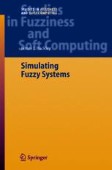Search
Search Results
-
Life Insurance: New Account Model
This problem was derived from an example in [1]. The system is shown in Fig. 15.1. This figure shows how this insurance company handles an...
-
Communication Requirements for Networked Control
There is an increasing interest in studying control systems employing multiple sensors and actuators that are geographically distributed....
-
Suboptimal Control Techniques for Networked Hybrid Systems
Over the past decade, major advancements in the areas of communications and computer networks [20] have made it possible for control engineers to...
-
A Sliding Mode Approach to Traffic Engineering in Computer Networks
In this chapter, we address the problem of optimal Traffic Engineering (TE) in computer networks; i.e., determining an optimal traffic allocation in...
-
Modeling and Designing the Internet Congestion Control
The Internet is a set of interconnected packet switching networks each of them having its own protocol. It was soon recognized the importance of...
-
Delay Effects on the Asymptotic Stability of Various Fluid Models in High-Performance Networks
Roughly speaking, a communication network consists of a collection of (network users/sources) elements interconnected to transfer information or data...
-
Closed Loop Control of a Load Balancing Network with Time Delays and Processor Resource Constraints
The objective of parallel processing is to reduce wall-clock time and increase the size of solvable problems by dividing the code into multiple...
-
Emergence of Complexity in Financial Networks
We present here a brief summary of the various possible applications of network theory in the field of finance. Since we want to characterize...
-
Characteristics of Biological Networks
Network principles describe uniformly systems as diverse as the cell or the Internet. The emergence of these networks is driven by self-organizing...
-
Classes of the Shortest Pathway Structures in Scale Free Networks
We study a problem of data packet transport between a pair of vertices on scale-free network, and introduce load of a vertex as the accumulated sum...
-
The Optimal Pathin an Erdős-Rényi Random Graph
We study the optimal distance $\ell_{\mbox{\scriptsize opt}}$ in...
-
Information Dynamics in the Networked World
We review three studies of information flow in social networks that help reveal their underlying social structure, how information spreads among them...
-
Clustering in Complex Networks
Real, mostly socially rooted networks have the tendency to form the simplest morphological structures observable: triangles, or in other words...
-
Boolean Modelingof Genetic Regulatory Networks
Biological systems form complex networks of interaction on several scales, ranging from the molecular to the ecosystem level. On the subcellular...
-
Introduction to Fuzzy Sets and Fuzzy Logic
This chapter surveys preliminary notions and results that we use in subsequent chapters. We pay more attention to concepts which might not be well...
-
Information Technology for Deaf People
In our modern information and communication society, daily life would be unthinkable without technology. Information and Communications Technology...
-
Algebras with Fuzzy Equalities
The present chapter studies algebras with fuzzy equalities. Briely speaking, an algebra with fuzzy equality is a set equipped with a fuzzy equality...
-
Fuzzy Horn Logic
Implications between identities have been widely studied in universal algebra. There are numerous results on implicationally defined classes of...
-
Multimedia Communication System for the Blind
A Multimedia communication system for blind users is developed. The system is named MIMIZU and its terminal is composed of a refreshable tactile...
-
15 Experimental Analysis of the Proprioceptive and Exteroceptive Sensors of an Underactuated Prosthetic Hand
The development of a prosthetic hand able to replicate as much as possible the gras** and sensory features of the natural hand represents an...
